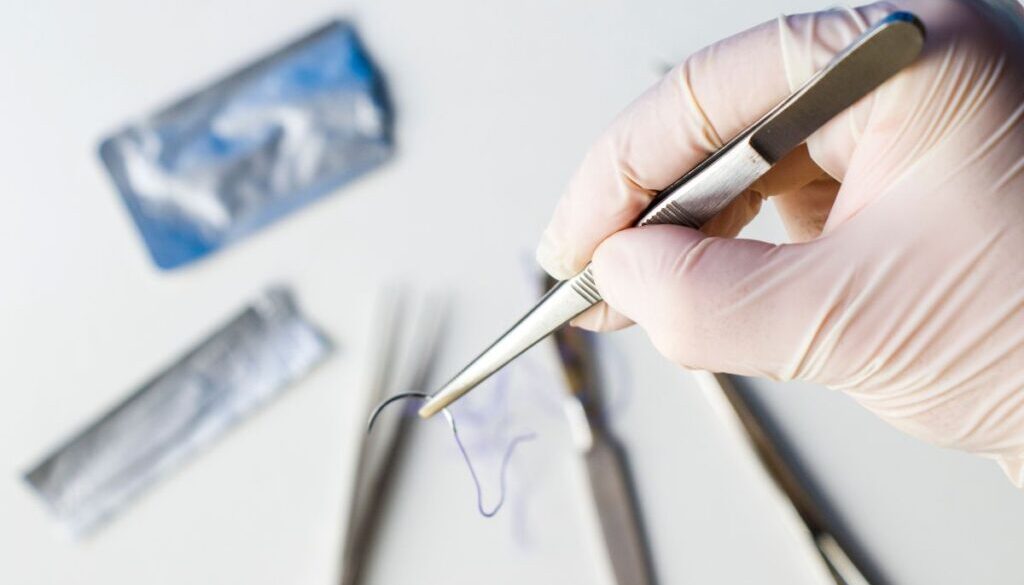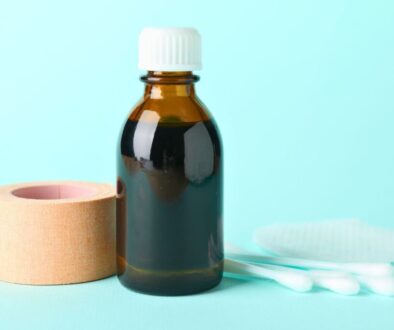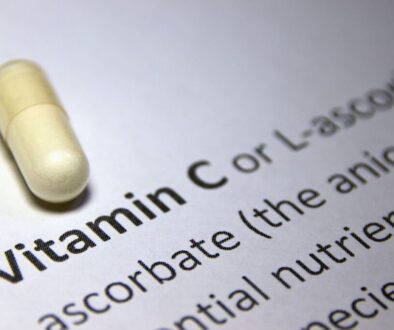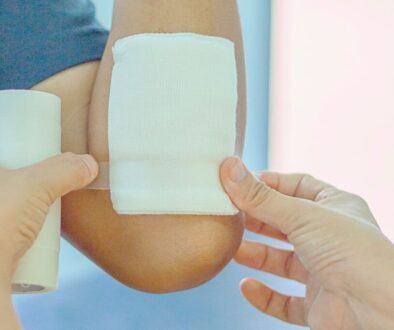Stitches Healing Stages: Key Insights For A Smooth Recovery
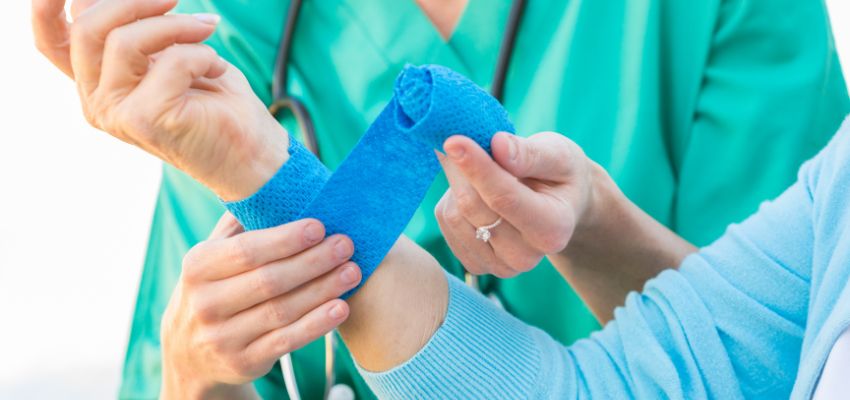
Initial Inflammatory Stage
The healing process starts with the inflammatory stage, typically within the first few days after an injury. During this crucial phase, two key activities occur: hemostasis and inflammation.
Hemostasis is the body’s immediate response to injury. It aims to stop bleeding by constricting blood vessels and forming clots. This initial clot prevents further blood loss and is a temporary barrier against pathogens.
After hemostasis, the inflammatory response begins. This phase involves a complex interaction among immune cells, including neutrophils and macrophages. These cells work diligently to clear debris, dead cells, and potential pathogens from the injury site. This step is vital for preventing infection and promoting healing.
This inflammatory phase shows visible signs. There will be redness, swelling, and warmth around the stitches. These indications occur due to increased blood flow and immune cell accumulation. This stage is crucial as it creates a protective environment that boosts the body’s natural healing processes.
Proliferative Stage
This critical stage occurs from day 3 to week two after an injury. It involves the formation of new tissue. During this time, angiogenesis takes place, where new blood vessels develop. These vessels provide nutrients and oxygen to the healing area.
During this phase, fibroblasts are active. These specialized cells are crucial for wound healing. They produce collagen, which creates a solid framework to support the healing tissue. As granulation tissue forms, it fills the wound. This process reduces redness, indicating improved circulation and decreased inflammation.
This granulation tissue enhances tissue strength and resilience. It paves the way for further healing and recovery. The proliferative stage is vital for restoring the function of the affected area.
Maturation And Remodeling Stage
The final phase of healing lasts several weeks to months. It focuses on realigning and strengthening collagen fibers in the tissue. During this stage, the body reorganizes the collagen matrix, improving the structural integrity of the healing area.
Over time, scars shrink and become less noticeable as skin elasticity improves. This remodeling can enhance appearance and restore functionality to the affected area.
This stage is crucial for optimal healing. The body adapts and refines the tissue, marking the end of the healing process. Regular physical therapy and proper care can support this phase, ensuring the tissue regains its strength and flexibility.
Stages Of Healing For Infected Stitches
Infected stitches can be a severe concern after surgery or injury. Here’s an overview of the infected stitches healing stages to ensure proper recovery.
Signs Of Infection
Recognizing the indications of infection is crucial for prompt treatment and recovery. Key indicators to watch for include:
- Increased redness. A change in skin color around the affected area may indicate inflammation.
- Swelling. Fluid buildup can lead to swelling, signaling the body’s response to infection.
- Pain. Discomfort or tenderness in the area can indicate an infection.
- Discharge. Any unusual fluid, especially pus, may suggest an infection that needs medical attention.
Early detection is crucial for preventing complications. It ensures timely intervention for health conditions, which boosts the chances of successful treatment and lowers the risk of potentially severe health issues in the future.
Influence On Healing Stages
Infections can prolong the inflammation stage of healing, resulting in an extended immune response. As a result, the normal healing process becomes disrupted. This delay can impact later stages, such as tissue formation, where new cells and tissues must replace damaged ones.
Infections can disrupt the remodeling phase, compromising the structure and function of healed tissue. As a result, secondary healing interventions might be needed, requiring additional treatments or procedures to ensure proper recovery and restore function.
Managing And Treating Infected Stitches
Managing and treating suspected infections is crucial. It helps prevent complications and promotes healing.
- Immediate consultation. Seek prompt medical attention. Get the infection evaluated to understand its severity. Determine the best course of action.
- Thorough wound cleaning. Clean the affected area meticulously to eliminate debris and minimize the risk of further infection.
- Antibiotic therapy. Based on the assessment, antibiotics may be prescribed. They aim to target and eliminate bacterial presence, ensuring a comprehensive treatment approach.
Factors Affecting The Stages Of Healing For Stitches
Healing is a complex process shaped by various factors that can affect recovery stages. Here are some key influences on the stitches healing stages.
Person’s Well-Being
Maintaining optimal health is essential for effective healing. Several key factors contribute to the healing process. Here are crucial elements that impact healing efficiency.
- Good nutrition. Proper nutrition provides the body with vital vitamins and minerals for tissue repair and immune function. A balanced diet of fruits, vegetables, lean proteins, and whole grains supports recovery.
- Adequate hydration. Staying hydrated is crucial for optimal bodily functioning and circulation. Proper hydration helps transport nutrients to cells and eliminate toxins, accelerating healing.
- Overall health. A person’s general health, including managing chronic conditions, influences healing efficiency. Regular check-ups and a healthy lifestyle enhance resilience and recovery times.
Role Of Chronic Conditions
Chronic conditions can impact the healing process. Some of these conditions include:
- Diabetes. Delays healing by affecting circulation and immune response.
- Heart disease. Limits nutrient and oxygen delivery to tissues, prolonging recovery.
- Obesity. It causes inflammation that hinders healing and raises complication risks.
- Autoimmune diseases. Trigger inflammation that disrupts natural healing processes.
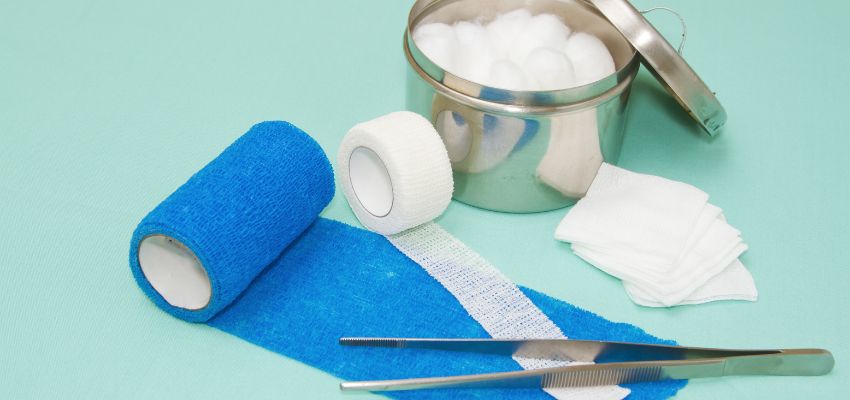
Wound Care Practices
Effective wound care is essential for optimal healing and preventing complications. Proper care techniques can enhance recovery. Here are some indispensable wound care practices:
- Regular cleaning. Gently cleanse the site with mild soap and water to remove debris and lower the risk of infection.
- Protection. Wrap the wound with a sterile dressing to protect it from dirt and bacteria and prevent further injury.
- Moist environment. Keep the wound moist with appropriate ointments or dressings to speed healing and minimize scarring. A recommended choice are amniotic membrane allografts for effective wound healing.
- Monitoring. Inspect the wound routinely for signs of infection and seek medical help if necessary.
- Avoid irritants. Avoid exposing the wound to harsh chemicals or excessive moisture, which can hinder healing.
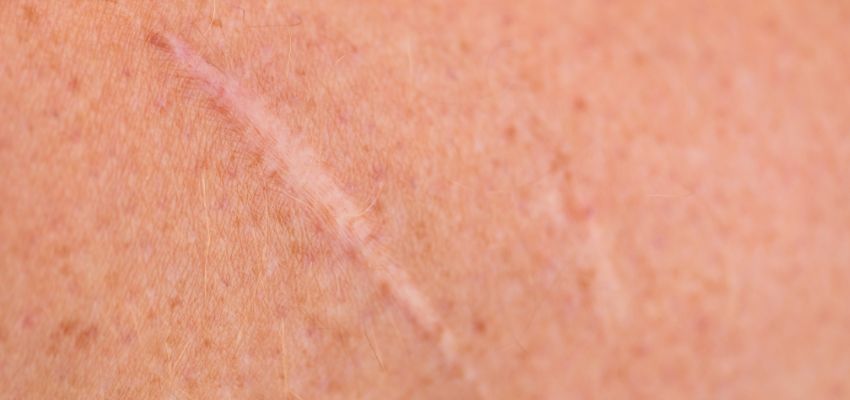
Potential Complications During The Healing Stages
Healing is a complex mechanism that can lead to various complications. Here are some common complications that may arise during the recovery period.
- Scarring. Scar formation is influenced by genetics, wound tension, age, infection, and skin type. To reduce scarring, use silicone gel and practice proper wound care. Massage therapy can also help. Additionally, it protects scars from sun exposure.
- Keloids and hypertrophic scars. Keloids and hypertrophic scars are abnormal scar tissues that can form after an injury. Keloids are elevated scars that grow beyond the original wound. Hypertrophic scars, on the other hand, remain confined to the injury site. These scars may improve over time. Treatment options include steroid injections, laser therapy, cryotherapy, and surgery.
Tips For Promoting Healthy Stitch Healing
Wound care and lifestyle choices are crucial for healing. Attending wounds and making healthy decisions can greatly improve recovery and prevent complications. Here are some key recommendations:
Proper Wound Care
- Regular cleaning. Carefully wash the wound with mild soap and water to eliminate debris and lower the risk of infection.
- Appropriate dressings changes. Change dressings as recommended to keep the wound protected and promote healing.
- Monitoring. Watch out for any signs of infection.
Lifestyle Recommendations
- Balanced diet. Incorporate a variety of nutrients, including vitamins and minerals, to support the body’s healing processes.
- Hydration. Increase the intake of fluids to maintain proper hydration, which is essential for healing.
- Avoiding strain on the wound. Minimize physical stress on the affected area. This helps promote effective recovery and prevents further injury.
When To Seek Medical Advice
Keep track of the healing process and seek medical attention if necessary. Some signs that may indicate complications during healing include:
- Increasing pain or discomfort at the wound site
- Prolonged redness, swelling, or warmth around the wound
- Discharge with a foul or unusual color
- Fever or chills
If you experience these symptoms, consult a healthcare provider for proper assessment and treatment.
Frequently Asked Questions
What do healthy healing stitches look like?
The wound healing process comprises several stages. Initially, the wound may appear red, swollen, and moist. Once it closes, a pink or red raised scar may form, eventually becoming less prominent and flatter.
How long does it take for a stitched wound to heal?
Typically, a surgical incision heals in about two weeks. However, more complex incisions may require a more extended healing period.
Do stitches hurt as they heal?
The stitches themselves shouldn’t cause pain during the healing process. That said, it’s common to experience some itchiness around the wound.
Can I wash my stitches?
Avoid cleaning the stitches for the first 48 hours. After that period, gently wash the area to remove any crust.
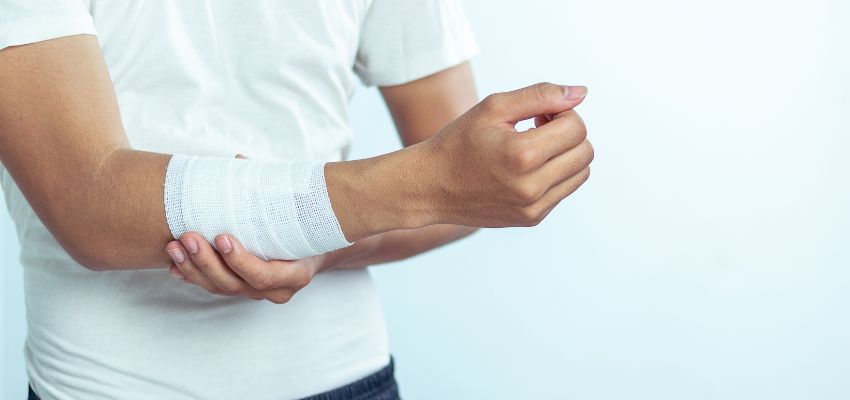
Ensuring Proper Care For Optimal Stitch Healing
Understanding the different stitches healing stages can significantly enhance recovery outcomes. Individuals can promote efficient healing by following recommended care practices. Addressing complications promptly can also help minimize scarring. Always consult healthcare providers with concerns to ensure the best possible outcomes. Take charge of your healing by following these guidelines and seeking help when needed.
Heal Ulcers, Burns, & Surgery Wounds With Break-Through Amniotic Allograft Treatments
Experience the future of wound care with our advanced amniotic allograft treatments. Say goodbye to slow healing. Our innovative solutions promote faster recovery from pressure wounds, ulcers, burns, and surgical wounds. Trust the power of science for your healing journey. Regain your comfort and health today! See if you are eligible for treatment here.

About The Author
Corinne Grace is a full-time writer living in the Philippines. She has a nursing degree from Riverside College. Her background in nursing informs her perspective, allowing her to weave in themes of health, empathy, and resilience into her work.
